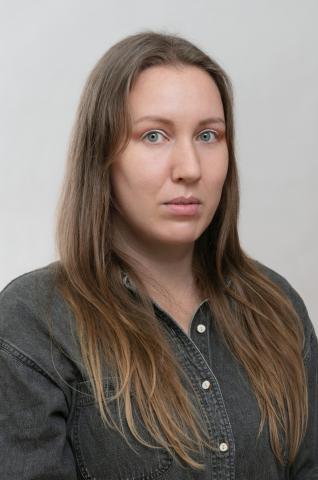BACHELOR OF FINE ART IN PAINTING, 2007
ALUMNI DISCOVERY INITIATIVE, INTERVIEW BY ALEX STEINTZ, 2016
WITH UPDATES FROM JUNE 2019
Photo: Jenine Marsh. Photo credit: Laura Findlay.
Alex STEINITZ: When did you graduate from ACAD? What was your major?
Jenine MARSH: In 2007. I majored in painting, but I didn't actually do much painting. I took painting because the studios were the biggest! Actually, my best friends in the painting program were also making sculpture or drawings, rather than paintings.
STEINITZ: And what’s your current employment?
MARSH: Right now I am a full time artist, thanks to a lucky year with grants. This is the first time since grad school that I haven’t had to have a part-time job of some kind.
STEINITZ: A lot of graduates use the ACAD degree as a creative stepping stone. So, what do you do? And how has what you do evolved since graduation? And how did your education at ACAD direct your career?
MARSH: When I started ACAD, I thought I would go into design. I didn’t have a lot of experience actually making art. I had really poor art instruction in high school, but I had always wanted to do something creative. Even though I always wanted to be an artist, I had no idea how to go about becoming someone who makes work as their job and not for somebody else
At first, I thought I'd go into design, but once I was at ACAD I was exposed to contemporary art, and more advanced art instruction, and I decided to change course. ACAD showed me the two options — design and fine art — and I was able to make a choice based on seeing what the different streams looked like.
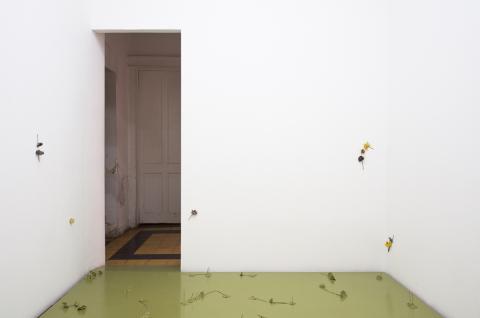
feminine marvelous and tough (2015), flowers, synthetic rubber, alkyd paint
And how has what I do evolved since graduation? It's evolved a lot I'd say; it’s been about 12 years, so I've had a lot of time since ACAD. I’ve done residencies and I received my MFA, and I have been pretty steadily busy with exhibitions. My work has changed and developed a ton since my undergrad, but looking back at some of the work that I was making for the final years of my undergrad, it does relate to what I'm doing now in kind of a tenuous way. It’s nice to see that stream of thinking kind of still continues, even if maybe only I can see it.
STEINITZ: What insights did your time at ACAD give you when looking at things? Why does what you learned at ACAD matter?
MARSH: I took me five years to finish my BFA, because I started my first year not sure what program I wanted to go into. I decided that I would go into the painting department, because of the large studios, even though I wanted to focus on making sculpture. I wasn’t vibing with the people who were in my year so I ended up taking off the next semester and taking a semester of courses in Victoria. When I came back I was with a different year of students in the painting department and we got along immediately; we became instant friends.
I think that was one of the biggest things that I picked up at ACAD: that your community is so important, that if you don’t have people to talk to, a community that you can have a critical dialogue with, then it's like half of your art practice is missing. My peers were far more influential than my instructors, in both my undergrad and grad studies at Guelph. At ACAD I made some really good friends and I helped with the 809 gallery in a friend’s garage. We came up with the idea for that gallery when we were on our school field trip in Chicago when we visited some great alternative art spaces. A lot of things happen when you have a good community, I think. We created our own opportunities.
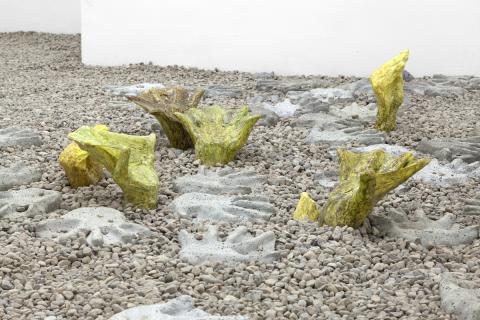
The Extrovert (2016), plaster, cellophane, acrylic paint, concrete, pigment, gravel
STEINITZ: After graduation, what obstacles did you encounter and how did you overcome them?
MARSH: Hmm, money's always really hard. It can be hard to balance making money and prioritizing art without sacrificing too much in terms of being able to buy groceries or supporting yourself.
That's something I'm still figuring out. Right now, I have the support of two grants, but even then, money is tight, and I am in no way able to work uninhibited. Making art is incredibly expensive, even in my case where many of my materials are found and I don’t often need to outsource labour. Shipping, maintaining a studio, storage, travel; all these things are typically the burden of the artist rather than the gallery or institution. And there is obviously a serious shortage of affordable living and working spaces for artists in major cities, the places that benefit the most from the arts. This is something that all of my friends are dealing with; this is not rare. If you're a thirty-ish artist and you're not a full-time teacher, then you're probably struggling with money, and if you're a full-time teacher or working full-time elsewhere, you're probably struggling with getting your art practice off the ground. So, it's tricky. Balance is the hardest thing, and I haven’t overcome it yet.
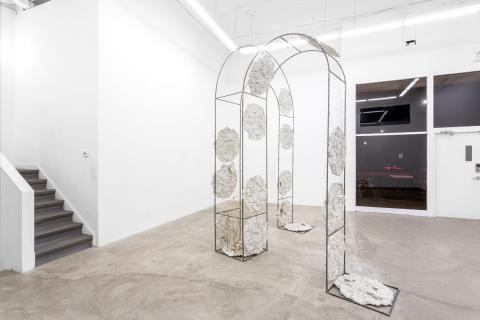
wastelanders (2017), welded steel, gypsum cement, plasticine, wire, train-pressed coins, weeds, nail varnish, graphite
STEINITZ: What was your time at ACAD like?
MARSH: It was really social, I got along really well with my year. We did a lot of events at 809 Gallery and we also put on shows in one of the school studios. We were always organizing things and curating exhibitions and making things happen, so we were extremely busy with this little community of artists who wanted to be active and wanted to make a scene. I think Calgary has grown since then, there have been lots of new pop-up spaces and initiatives. During the time I was at ACAD, there weren’t so many opportunities for very young, emerging artists, so we just did it ourselves. ACAD itself was really fun and productive: we were doing all these outside projects, but we were also working very hard in our studios. It was a generative time. I think we all felt like that.
STEINITZ: What do you feel is the role of ACAD and our alumni in shaping our cultural and economic prosperity?
MARSH: Let’s see… that’s such a weird question — economic prosperity. Institutions such as ACAD definitely need to invest more heavily in their communities, as well as in their faculty and students. It’s their job to put money and effort, time and bodies into their community, and ensure that they aren’t an impenetrable bubble of institutionalized culture. In terms of turning creative professional practice into economic prosperity, “cultural capital”, I think it’s important to not think of art as something that should necessarily create capital, but instead as a place where capital investment can support ideas and communities, where the desired outcome of investment should not necessarily be a capital return to the investor. In terms of alumni, breaking out of regional thinking and regional practice is important. This brings new ideas in, and also gets local ideas out.
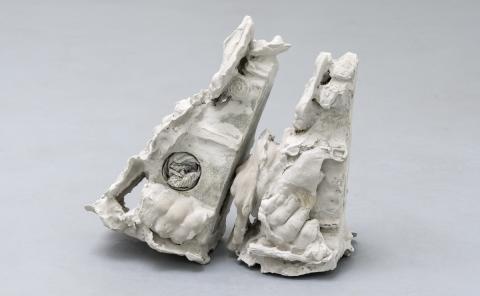
whose ruins litter a fictional garden (no. 1 & 2), 2017, found plaster corbel, gypsum cement, plasticine, newspaper, foreign and forged paper and coin currencies, clock faces, wire
STEINITZ: Where does art fit into your future?
MARSH: Everywhere. My aim is still to prioritize being an artist above anything else.
STEINITZ: You've done a lot of work in a wide range of arts-related fields, so do you feel that the more work you do in those fields, the more you grow as an artist? For example, teaching and writing.
MARSH: For sure, I think the more you can branch out the better, without stretching your practice out too much. I write exhibition texts and reviews. I’ve also participated in reading and writing groups, and I organize the occasional show. For me, these kinds of parallel pursuits are so important. They broaden the dialogue from the few things I’m researching, and they expand my frame of reference and vocabulary from whatever I’m currently thinking about in my practice. They can also give access to a different group of people, and it’s always important to hear what other people think, besides the voices in your head.
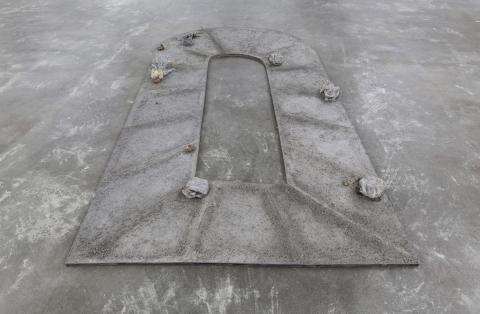
walk the rail (2019), welded steel, concrete, gravel, soil, wildflower seeds, flower bulbs, train-pressed coins, magnet
